Rhinoplasty Scar Healing: How to Get Rid of Nose Job Scar?
Facial Plastic Surgery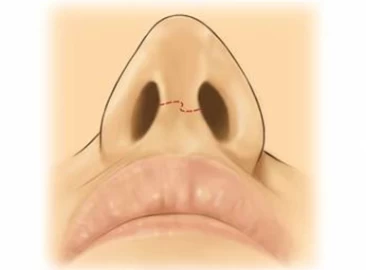
Rhinoplasty, one of the most common types of plastic surgery in the world, can change the shape, size, and structure of the nose and improve its function. In addition to its numerous advantages, it has one major disadvantage, i.e., scarring.
If you do not follow the post-operative instructions, noticeable scar tissue will develop under, inside, and around your nose. Nose job scars can negatively affect the shape of your nose and cause breathing difficulty. In this article, we discuss the reasons for developing rhinoplasty scars and answer some of your questions about how to remove open rhinoplasty scars.
If you want more information about what to do after rhinoplasty, read the rhinoplasty aftercare article.
Why Does Rhinoplasty Scar Tissue Form?
Scarring after a nose job depends on several factors, the most important of which is the patient's skin type. People with white and thin skin will experience fewer scars, while patients with darker and thicker skin will have more visible scars after open rhinoplasty.
In an open rhinoplasty, the surgeon cuts the sides of the nasal fins, the lower area of the bridge, and inside the nostrils to lift the nose's skin and make the necessary changes. Then, they reposition the nasal skin and stitch the incisions. When the skin tries to heal, it forms a new tissue made of a protein called collagen. This scar tissue serves as a rubber band that pulls the wounds together. Although scarring is an inevitable side effect of nose surgery, some measures can be taken to prevent or minimize it.
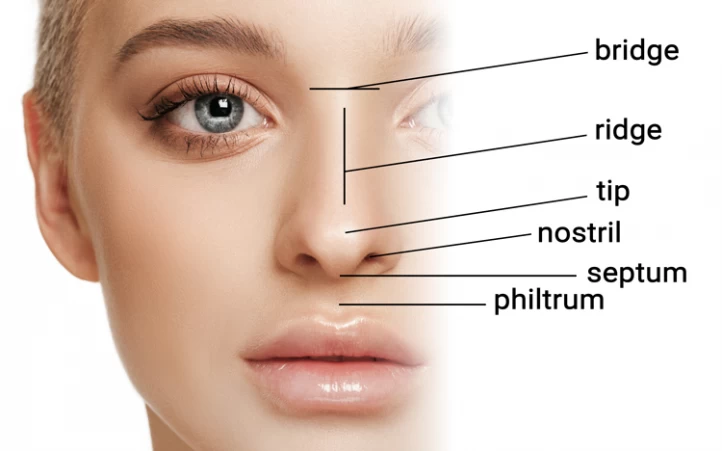
Treatment of Rhinoplasty Scar
In most cases, the rhinoplasty scars fade away on their own gradually; however, bad rhinoplasty scars can be treated in four ways: injection of steroids, applying ointments, laser therapy, and revision rhinoplasty. Remember to consult your doctor before using any of the following methods.
Steroid injection
This method is the safest way of removing rhinoplasty scars. Although steroid shots are effective, they can only minimize thin scar tissue.
Applying ointment
After the nose job, your surgeon probably asks you to apply antibiotics and anti-scar ointments for several months. You can also use silicone gel sheets or ointments to reduce the nose job scars.
Laser therapy
Although the laser will not remove the rhinoplasty scars, it can make them less visible by producing collagen on the incision site.
Revision rhinoplasty
If the scars are too large and interfere with the surgery result, the surgeon performs revision rhinoplasty (also known as corrective rhinoplasty).
However, remember to wait at least a year before undergoing corrective rhinoplasty. Many nose job scars do not need surgical treatment and will get paler.
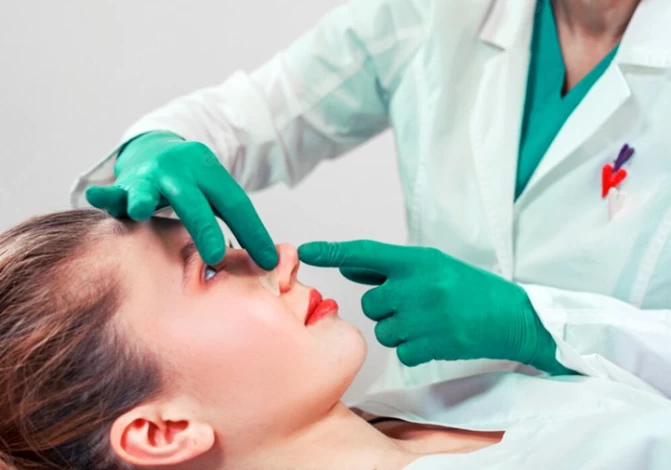
Is Nose Surgery Scar Visible?
The answer to this question depends on whether the patient undergoes open or closed rhinoplasty. In any case, if the surgery is done correctly and by the hands of a skillful surgeon, the nose job scars will be few and barely noticeable.
Scars after open rhinoplasty
In open rhinoplasty, the surgeon makes small incisions on and around the nose to lift the nasal skin. By doing so, they will have more access to the inner parts of the nose and can change its structure more easily. Scars caused by open rhinoplasty are usually more visible than closed rhinoplasty, but they will fade over time. To remove the scars after open rhinoplasty, apply special ointments and use silicone gels from the first week after the operation.

Scars after closed rhinoplasty
In closed rhinoplasty, no incisions are made on the outer part of the nose. The surgeon performs all the changes through the nostrils; for this reason, scars and stitches are not seen after the surgery, and only when the patient moves his head backward can the stitches be seen in the inner part of the nose. Also, in closed rhinoplasty, the recovery period is much shorter, and the patient will have less pain and swelling.
Where Does Scar Tissue Form After Rhinoplasty?
Where the scar tissue forms depends on the method of nose job surgery; in open rhinoplasty, the scars develop beneath the nasal tip (between the nostrils) and around the fins, while in closed rhinoplasty, the scars are invisible inside the nose.
One way to determine the extent of internal scar tissue after rhinoplasty is to check for inflammation inside the nose. If the inflammation is severe, you cannot breathe properly (especially when lying down) and may experience frequent nosebleeds. You can minimize the inflammation of scar tissues in your nose by getting steroid injections and using a cold compress.
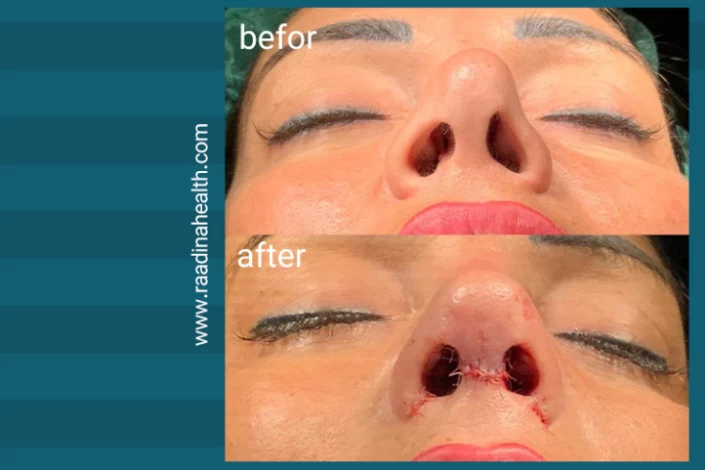
Scar tissue inside nostril after rhinoplasty
The development of scar tissue inside the nostrils is not unusual in patients who undergo rhinoplasty. Scar tissue can grow due to surgical incisions or as an inevitable phase of the healing process.
While some scar tissue is to be expected following any operation, excessive scar tissue can cause discomfort and damage the overall appearance and function of the nose. Scar tissue can cause breathing difficulty or nasal obstruction in some circumstances. Scar tissue problems, on the other hand, can be treated and controlled efficiently with adequate post-operative care and regular follow-up visits with the surgeon.
Scar tissue on the bridge of the nose after rhinoplasty
As the body initiates its healing response, fibroblasts migrate to the injured area, producing collagen fibers that gradually replace damaged tissue. However, this reparative process can sometimes result in excessive scar tissue formation on the bridge of the nose.
The appearance and extent of the nose bridge scar can vary among individuals, influenced by genetics, surgical technique, and post-operative care. While scar tissue may cause aesthetic concerns or functional issues such as nasal obstruction, various treatment options are available to address these complications and improve patient outcomes.
Columellar scar after open rhinoplasty
After undergoing an open rhinoplasty procedure, it is common for patients to develop a columellar scar. The columella is the small strip of skin that separates the nostrils, and during the surgery, an incision is made in this area to access the underlying structures of the nose. While every effort is made to minimize scarring, it is important to note that some scarring is inevitable.
The appearance and severity of the columellar scar can vary from person to person, but with proper care and healing techniques, it typically fades over time and becomes less noticeable. Additionally, advancements in surgical techniques have allowed for more discreet incisions and improved scar management options, such as silicone sheets or gels, which can further aid in minimizing the visibility of the scar.
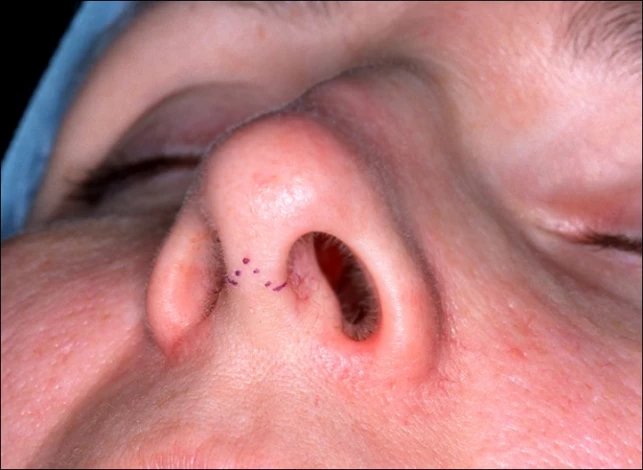
How to Prevent Nose Job Scar?
To prevent nose job scars, you should consider the following points:
- Choose an experienced plastic surgeon who is familiar with new techniques;
- Avoid smoking in the first weeks after a nose job because nicotine causes scarring and the formation of dead skin around the incision site;
- Avoid using blood thinners as they hinder the healing process;
- Avoid drinking alcohol as it causes swelling and delays the wound-healing process;
- Follow your doctor's instructions to minimize bleeding, swelling, and scarring;
- Avoid activities that cause your blood pressure to rise;
- Keep the incision site clean;
- Drink at least six glasses of water a day to hydrate your skin;
- Apply moisturizers from a week before the operation.
Necrosis After Rhinoplasty
Necrosis is a rare side effect of rhinoplasty which forms due to the following factors:
- Disorder in nasal veins;
- Intranasal infection;
- Making excessive changes in the nasal tissue by the surgeon;
- Injection of non-standard gel into the nose or a large amount of it in the wrong place;
- Smoking and drinking alcohol after the surgery and
- Applying pressure on the nose.
For treating necrosis, doctors try to repair the necrotic area by replacing it with a natural tissue of the person's body, such as a rib or ear's cartilage. In cases where a person has lost a large part of his nose due to necrosis, the necrotic part must be replaced with a prosthesis. However, the damaged tissue should be completely treated and have no infection.

What Does Worsen Rhinoplasty Scar Tissue?
In the following, some of the main factors that can worsen rhinoplasty scar tissue are mentioned:
Infection: If the wounds and scars become infected after nose surgery, nose scar healing time will be prolonged. In this situation, the patient may have to take antibiotic pills or apply antibiotic ointments. If you want to know more about rhinoplasty infection, don't miss Raadina Health article (Infection after Rhinoplasty)
- Smoking: The body needs oxygen to complete the healing process after rhinoplasty. Since there is less oxygen in the blood of smokers, their scars heal more slowly, and the risk of developing additional scar tissue in them increases.
- Dry skin: Having dry skin interferes with the healing process of the wounds and makes it difficult for the septum to heal.
- Age: The body's ability to recover after surgery decreases with age. The speed of wound healing in a 60-year-old patient is much slower than in a 20-year-old patient. So, if you are above 45 and your skin has lost its elasticity, you should wait longer for the node job scars to fade.
- Direct exposure to sunlight: The sun's ultraviolet rays darken the scar tissue and make the scars more visible.
- Allergic reaction: Allergy to post-operative drugs can cause infection and swelling of the wound, and ignoring this problem will make the rhinoplasty scars more prominent and visible.
Conclusion
Iran welcomes thousands of nose surgery candidates annually as the central hub for rhinoplasty. If you intend to benefit from the experience of skillful plastic surgeons at a fair price, contact Raadina Co.
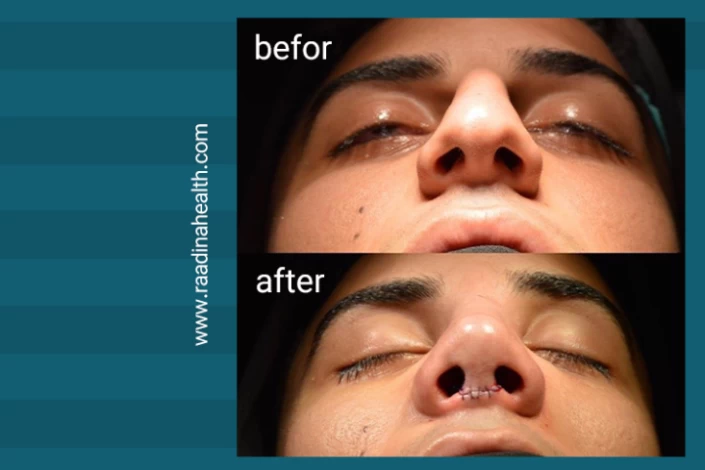
FAQs on Nose Job Scar
Do rhinoplasty scars disappear, and how long does it take?
The major scars fade around a week after your rhinoplasty procedure, and the scarring will disappear within three to six months. Some small scars under the nose can also be covered by makeup products such as foundation and concealer. However, if the scars are atrophic, they should be removed through more invasive procedures such as laser therapy, chemical peeling, and surgical treatment.
What is open rhinoplasty scar healing time?
The open rhinoplasty scar will fade gradually, but its speed depends on the type and color of the skin, the extent of the incisions, and the patient's age. In general, it takes almost 6 months for the scars to vanish.
How can I eliminate the rhinoplasty scar under the nose?
The nose surgery scars under the nose will fade with ointments and topical creams. The doctor may suggest laser therapy or revision rhinoplasty if the scar is too prominent.
Does the method of rhinoplasty affect its post-operative scarring?
Yes. In open rhinoplasty, the incisions are made on the outer part of the nose, while in closed rhinoplasty, all incisions are made inside the nostrils. As a result, people who undergo open rhinoplasty will face more scars after the surgery.
Can I reduce rhinoplasty scars at home?
Of course, you can minimize the rhinoplasty scars at home by following instructions such as avoiding sun exposure, applying sunscreen and ointments, staying hydrated, avoiding strenuous activities, etc.
How long do nose job scars last?
The duration of nose job scars can vary depending on various factors, such as the individual's healing process, the surgical technique used, and how well the scar is cared for during recovery. Most nose job scars are relatively small and well-hidden, either inside the nostrils or along the nose's natural creases. These scars typically fade over time and become less noticeable within a few months to a year after surgery. However, it is important to note that everyone's healing process is unique, and some individuals may experience more prolonged or visible scarring.
What is scar tissue after rhinoplasty?
Scar tissue forms naturally as your nose heals. On the surface, it can look red or slightly raised, and inside the nose, it may feel firm. Some scars soften over months, but consistent care speeds up recovery.
Can scar tissue form inside the nose after rhinoplasty?
Yes, it’s common for scar tissue to develop internally. This usually doesn’t change appearance, but some patients notice minor congestion or crusting. Using saline sprays and following post-op instructions helps minimize these issues.
Which rhinoplasty scar cream works best?
Silicone gels or sheets are generally the most effective. They hydrate the tissue, reduce redness, and help flatten raised scars. Your surgeon can recommend the right product and timing for application.
Can picking inside the nose create scar tissue after rhinoplasty?
Absolutely. Touching or scratching the inside of the nose can damage healing tissue and form new scars. Avoid touching your nose until it’s fully healed, and use recommended nasal sprays for cleaning.




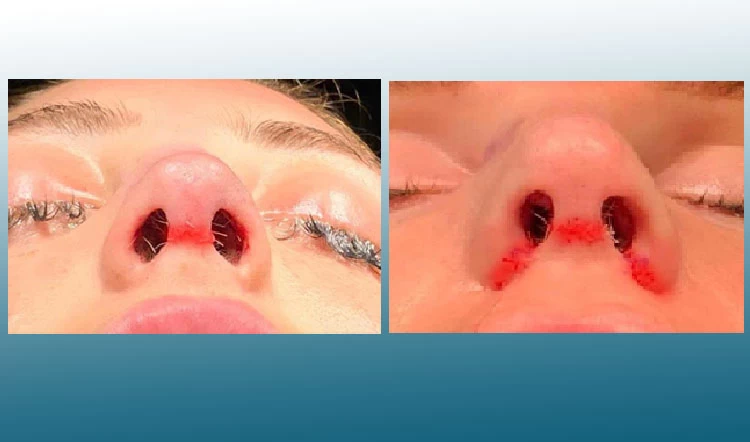
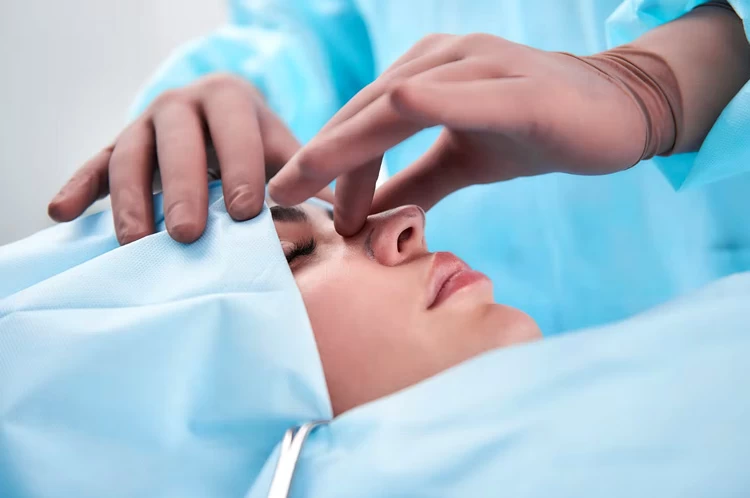
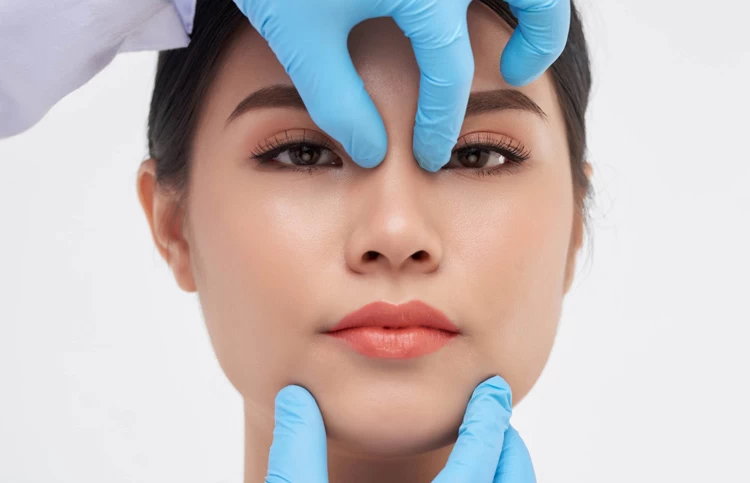



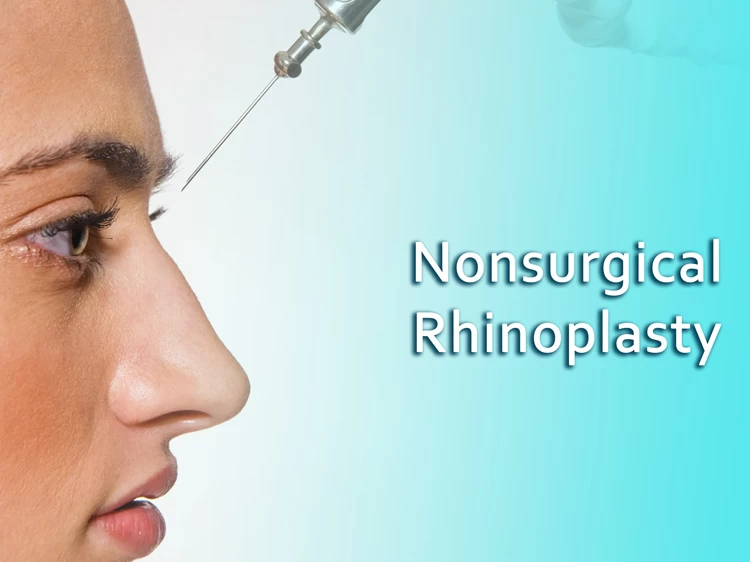
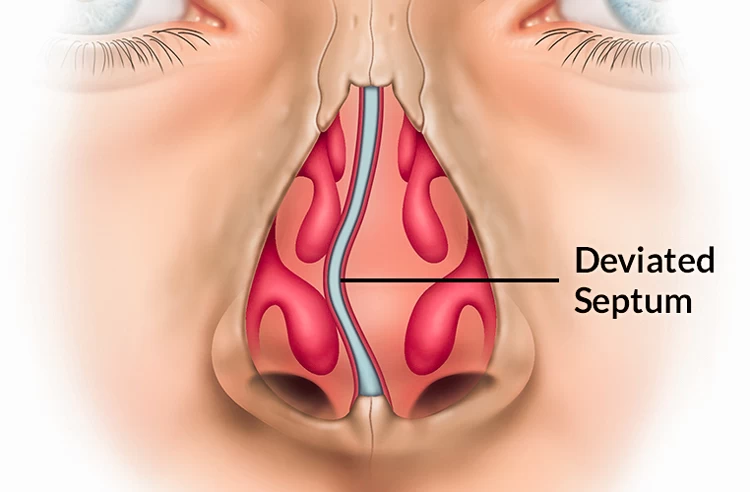
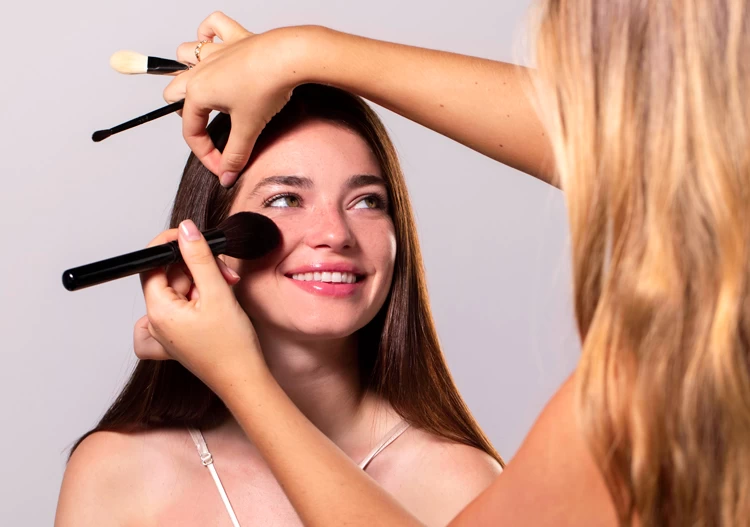
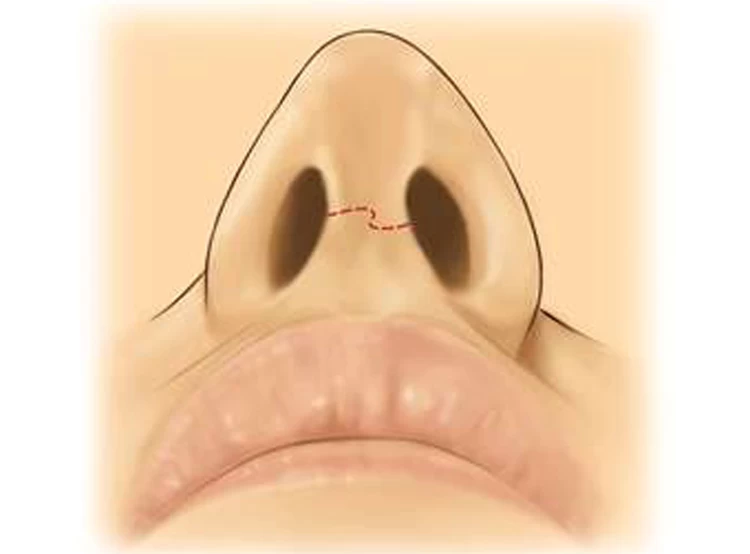
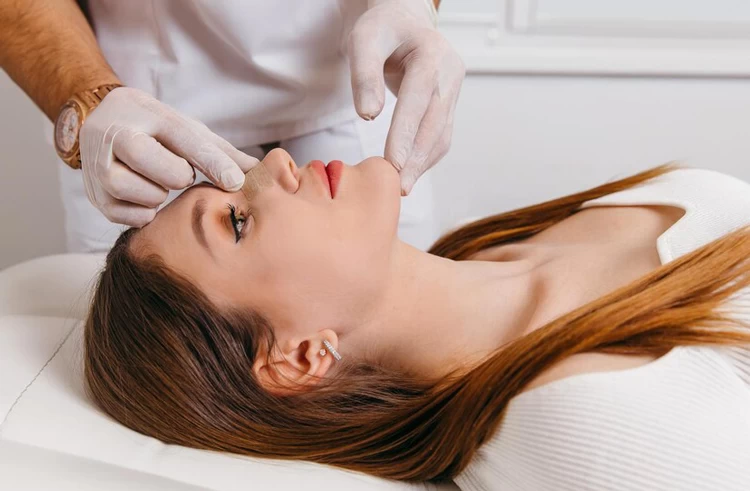


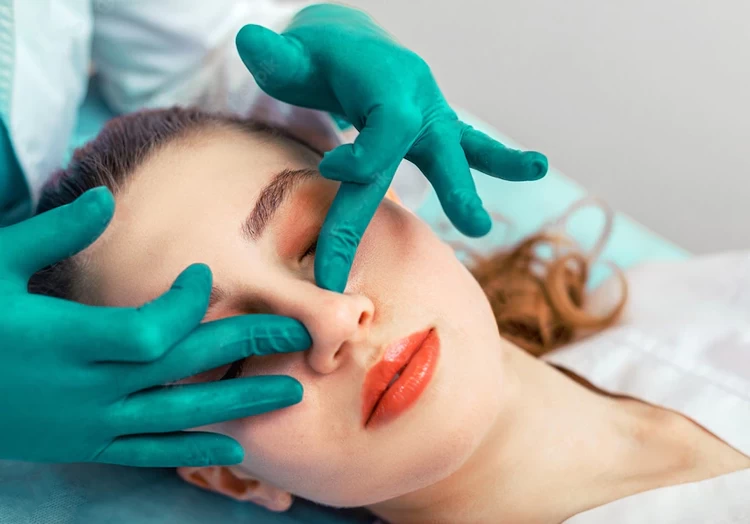
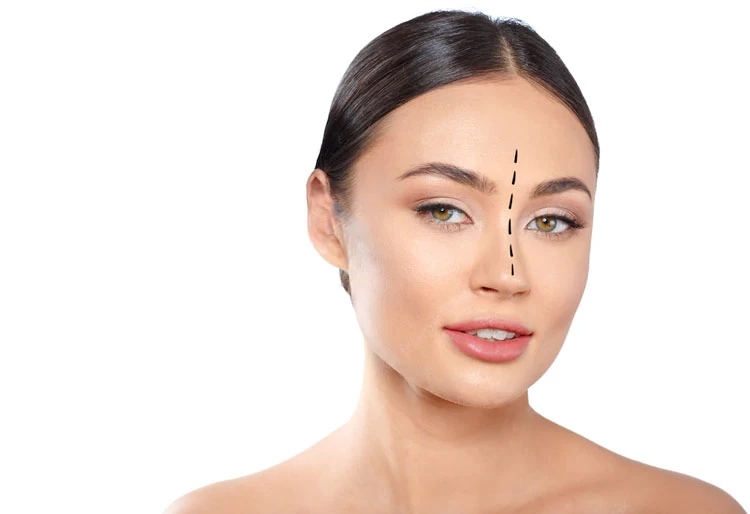

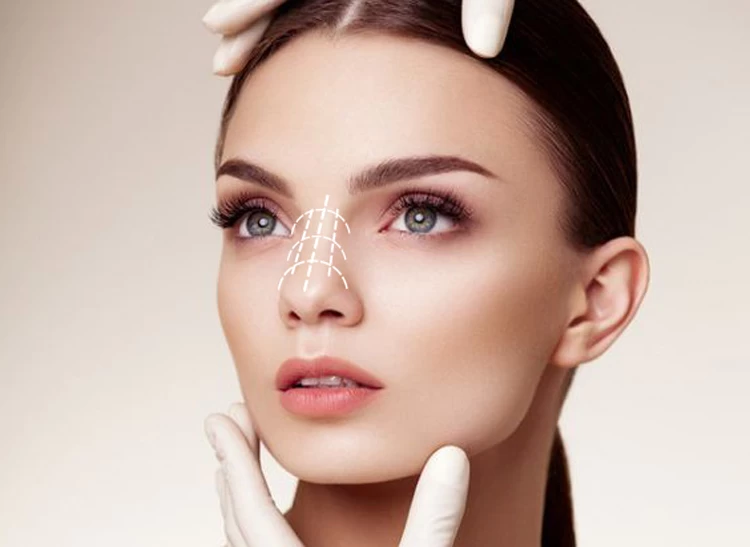
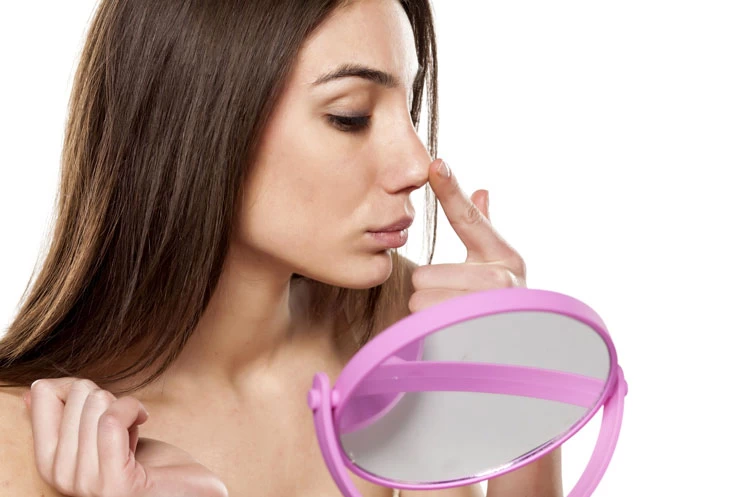
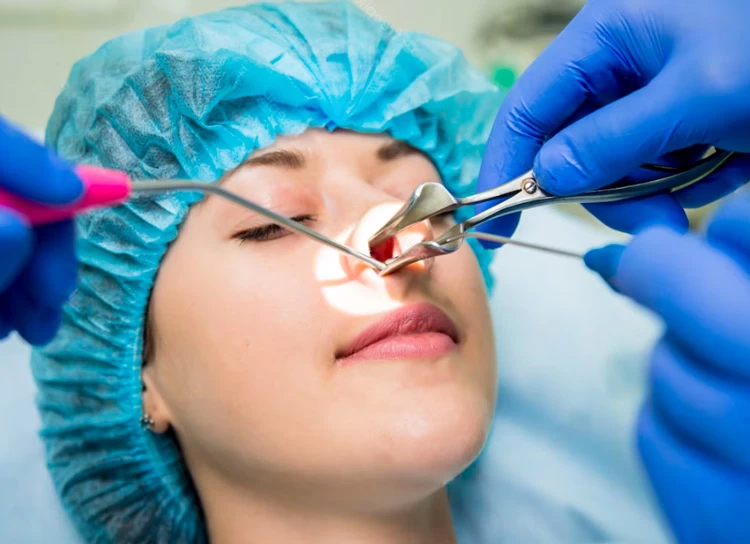
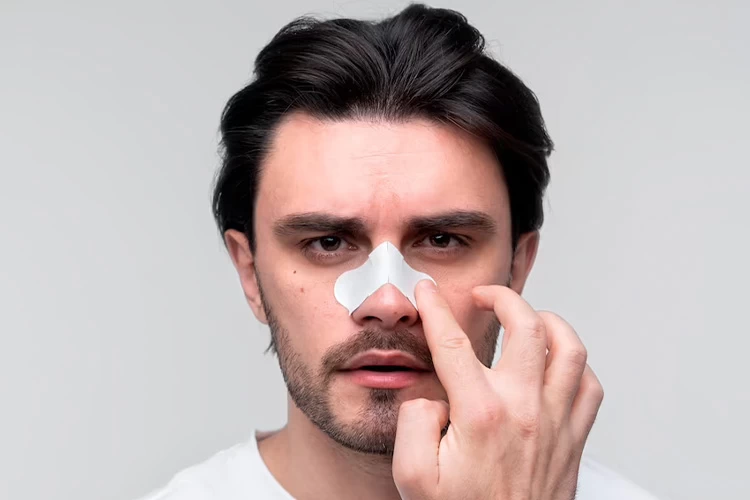
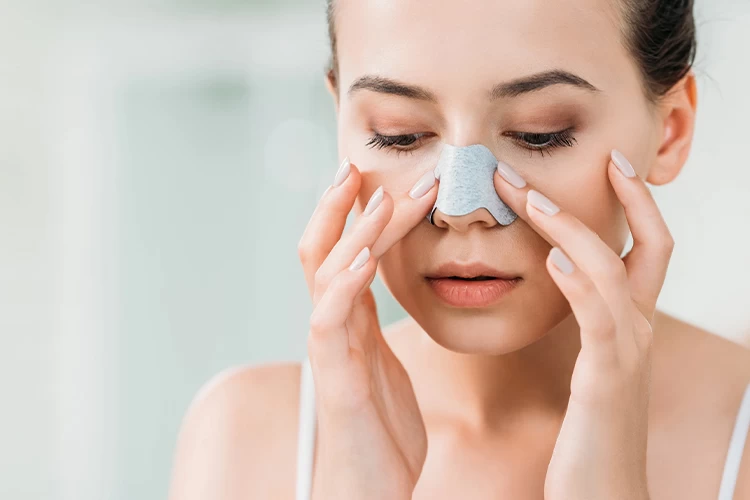

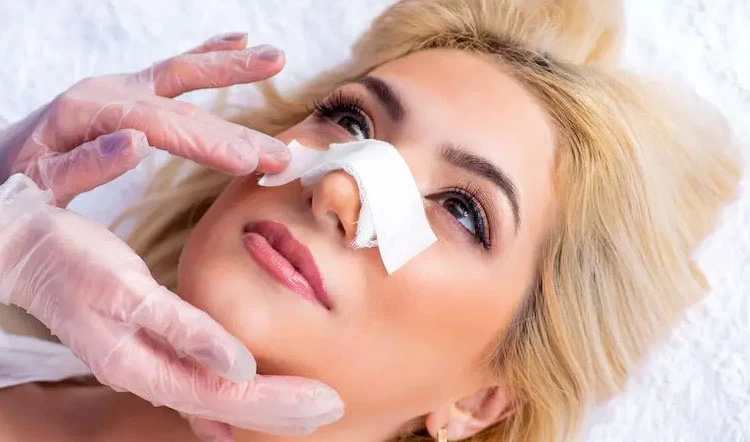


User
-Hello, I have a fibrotic syndrome which is growing and spreading everywhere under the skin. A research and study has been made on this issue which can be found by typing "post rhinoplasty fibrotic syndrome " I had a 3rd nose job and this time my Dr had performed alar plasty as well and now the scar formation under the skin is growing and I feel pressure around my eyes and notice light colored scarring besides the once under tip and bridge.. it's super complicated problem but can this be helped and managed to stop because the scarring is growing and not stopping at all. Looking forward to hearing from you. Or if I can have a direct contact with Mojdeh so that we can study this and make a breakthrough to help me and many others who face this issue. Thank you,
Fatemeh Vajhi
-Hello
We can get online advice from the relevant doctor for you and share your problem with him
In this regard, you can call +989026921957
Be in touch with the relevant expert on WhatsApp